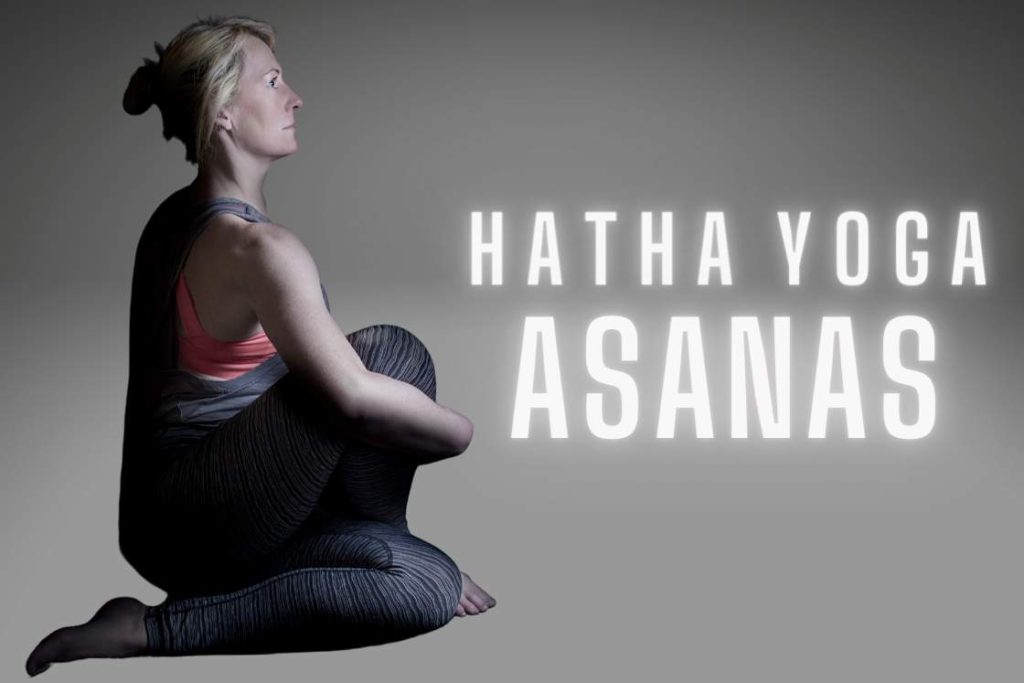
Hatha yoga is called the ‘yoga of asanas’. It’s so because traditional hatha yoga texts are the only references that describe physical postures with such great detailing and importance. Before the hatha yoga period, asanas were meant for meditation purposes only.
The very basic idea behind hatha yoga origin was the purification of the body and its elements before indulging in meditation (mental) practice. This idea builds a foundation for the physical postures, we know today as hatha yoga asanas.
Hatha Yoga Asanas
In hatha yoga, asanas are performed as the first limb instead of Yama and Niyama in contrary to Patanjali’s eight limbs. According to Hatha yogis, self-discipline and self-control (what Yama & Niyama teaches) are only possible to practice when you’re physically prepared.
Hatha yoga asanas are the specific bodily positions that aim to open energy channels and psychic centers of the body. Beyond stretching and other physical effects, hatha yoga asanas have psychological means – It makes Prana moves freely. Prana flowing without any obstacle is the only key to a disease-free body.
How Many Asanas In Hatha Yoga?
The hatha yoga we know today came through the lineage of many great teachers and their disciples. Different ancient texts (that came from time to time) on Hatha yoga can help us know how many poses are there in yoga.
- The first and most authoritative text Hatha Pradipika (15th century) mentioned there are 84 asanas in hatha yoga taught by Adiyogi Lord Shiva. But out of 84 asanas, the book describes only 15 poses.
- Gheranda Samhita, a later text (17th-century) of hatha yoga mention and describe 32 asanas of hatha yoga.
- Hatharatnavali (17th-century) is the first hatha yoga book to name 84 asanas of hatha yoga but described only 36 out of it.
15 Asanas of Hatha Yoga
According to sage Swatmarama, there are 15 asanas in Hatha Yoga which are described in Hatha Yoga Pradipika. However, Swatmarama clearly mentioned he described only ‘some’ of the asanas, which means there could be more asanas!
Also Read: Hatha Yoga Pradipika: A Complete Overview
The 15 asanas are called original hatha yoga poses as it’s taken from classical hatha yoga. The word ‘Classical’ shows this system of practices is directly taught by a master teacher to the pioneer disciple orally.
The 15 asanas of Hatha yoga are; Swastikasana, Gomukhasana, Veerasana, Kurmasana, Kukkutasana, Uttanakoormasana, Dhanurasana, Matsyendrasana, Paschimottanasana, Mayurasana, Shavasana, Siddhasana, Padmasana, Simhasana, and Bhadrasana. Out of these 15, 11 are sitting postures which denotes hatha yoga asanas more emphsize on meditation and relaxation purpose.
1. Swastikasana (Auspicious Pose)
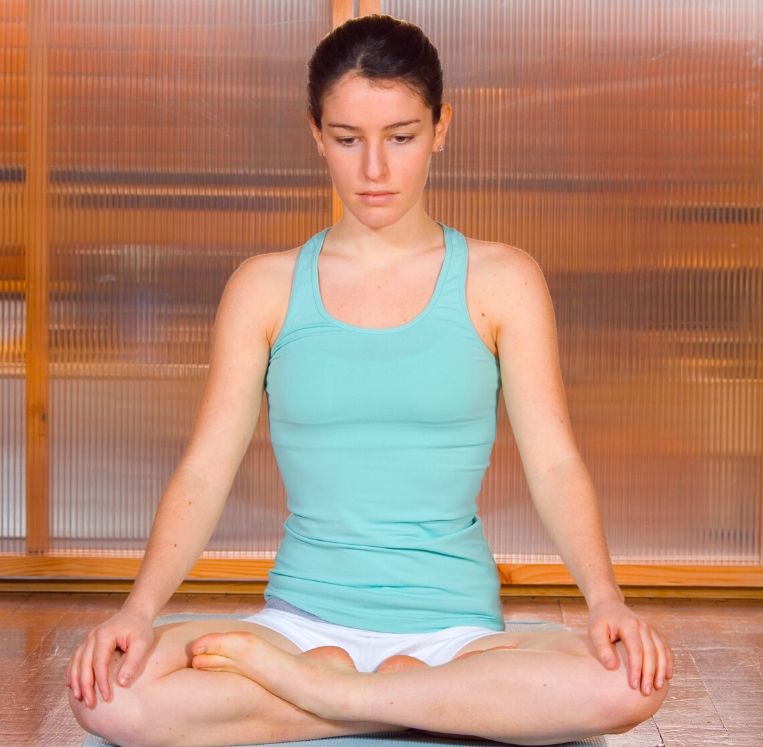
Swastikasana is the first hatha yoga asana described in the first chapter of HYP. It’s a cross-legged meditative posture where the feet are kept under the thigh on both sides forming a similar pattern like ‘Swastika’.
The term ‘Swastika’ is regarded as an auspicious symbol that represents fertility and creativity. This asana has a very calming and sacred effect, hence induces the same capacity in the body.
To do this Hatha Yoga Asana, keep your legs at a distance of 1 foot, bend the left leg from the knee and place it under the inner side of the right thigh. Similarly, bend the right leg and place it between the left calves and thigh. Keep the wrists of both hands-on respective knees.
Swastikasana is said to stimulate the nadis at the back of the legs which carry energy to centers in the spinal column.
This posture has a positive effect on the sciatica nerves. Dhyana Mudra in this asana improves the pulse beats and stabilizes them. You can achieve the concentration of mind with the regular practice of this Asana.
2. Gomukhasana (Cow face pose)
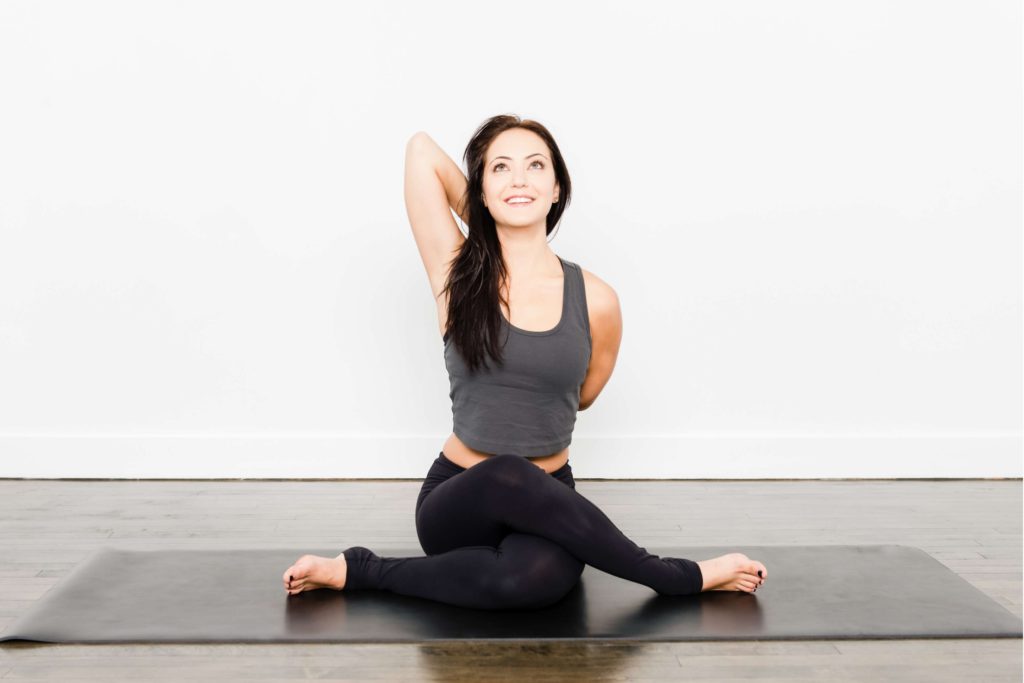
Gomukhasana is the second hatha yoga asana, although not a meditative posture but ideal for sitting longer period.
The legs in position made in this asana somewhat resemble the face of a cow (Go means cow, Mukha means face); both feet look like the ears and the crossed legs look similar to a cow’s face. Hence, also called cow face pose.
To come into Gomukhasana, sit properly by keeping your back straight and extend the legs in front of you. Put your right leg under the left thigh in a crossed position. Set your left knee over your right knee. Raise your right arm and bend from the elbow. Bring your left arm behind the back and interlock both hands behind your back.
Gomukhasana is described to keep maintain prana balance in the body by preventing it from dissipating outward through the Vajra Nadi (at the bottom of the spine).
3. Veerasana (Hero pose)

Veerasana is another seated meditative posture. In hatha yoga, Veerasana is also known by its full name “Mahaveerasana”. It’s named such because this asana gives heroic power and the ability to subdue like Mahaveer (Lord Hanuman).
There are two different variations of Veerasana are mentioned in Hatha Yoga Pradipika – one like simple ‘Vajrasana type’ and another with ‘Ardha padmasana like foot’. However, the one that is commonly practiced (Vajrasana type) is better for therapeutic and meditative purposes.
Traditionally it’s performed by bending your one foot as if you are sitting on your big toe. Then place the other foot on the opposite thigh. Keep your hands on both the knees in a meditative mudra.
Veerasana improves the blood supply to the joints of the body and also helps strengthen them. This Asana helps remove fat from the abdominal muscles and improves the flexibility of the spinal cord.
4. Kurmasana (Tortoise pose)
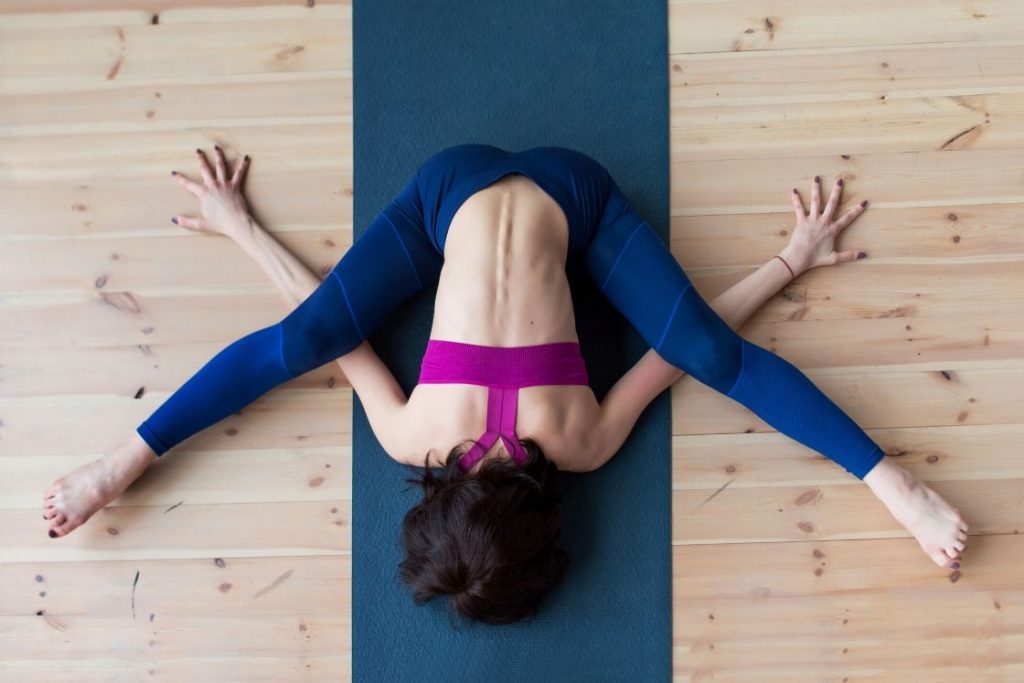
Kurmasana is literally known as tortoise pose. This asana has different explanations; one is a general explanation and the other is according to Hatha Yoga Pradipika. Hatha Yoga’s explanation says that this Asana activates the Kurma Nadi, hence named as Kurmasana. But the general explanation instructs a position somewhat similar to a tortoise (Kurma in Sanskrit), hence the name is given as tortoise pose.
To come into Kurmasana, sit crossing your ankles over each other, and bring your arms below your thighs towards your back. Keep your hand along the side of your hips. Then put your head in between your legs so that it gives a vision like a tortoise pose. Keep your face downwards touching the ground.
Kurmasana aids in the better functioning of our digestive and respiratory systems. Our neck, back, and shoulders get relaxed with regular practice of this asana. It improves blood flow to the brain and increases our memory.
5. Kukkutasana (Cockerel Pose)
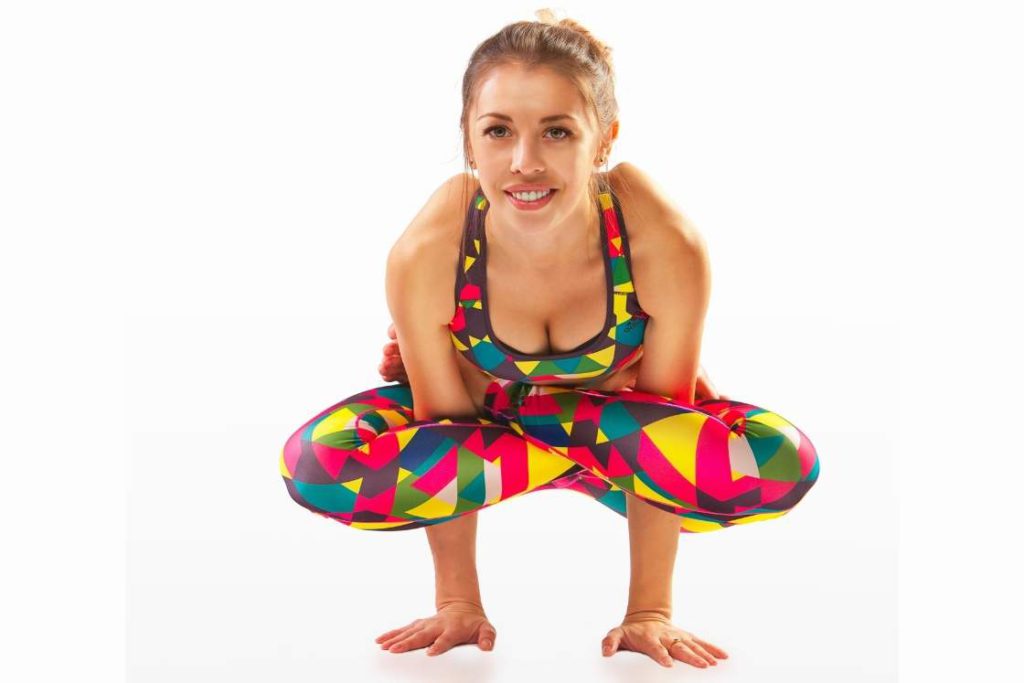
Among different sitting asanas of hatha yoga, Kukkutasana is one of the balancing poses where one has to lift up the body onto the palms. Its practice is aim to awaken the kundalini to the upper chakras.
Kukkutasana is a combination of Padmasana (lotus pose) and Bakasana (crane pose). Literally, this pose is known as the rooster or cockerel pose as it resembles a cock when you lift your body.
To come into Kukkutasana, start with Padmasana. After sitting in Padmasana, slide your hands between the gaps created with the thigh and the legs. Slightly lean forward and with the support of your palms lift your body upwards. Keep your fingers wide while putting pressure on palms at the time of lifting the body.
Kukkutasana strengthens arms, upper chest, and shoulders. The flexibility of joints and hips gets increased through this Asana. It awakens our Kundalini; hence enables us to follow the path of spirituality.
6. Uttana Kurmasana (Stretching Tortoise Pose)
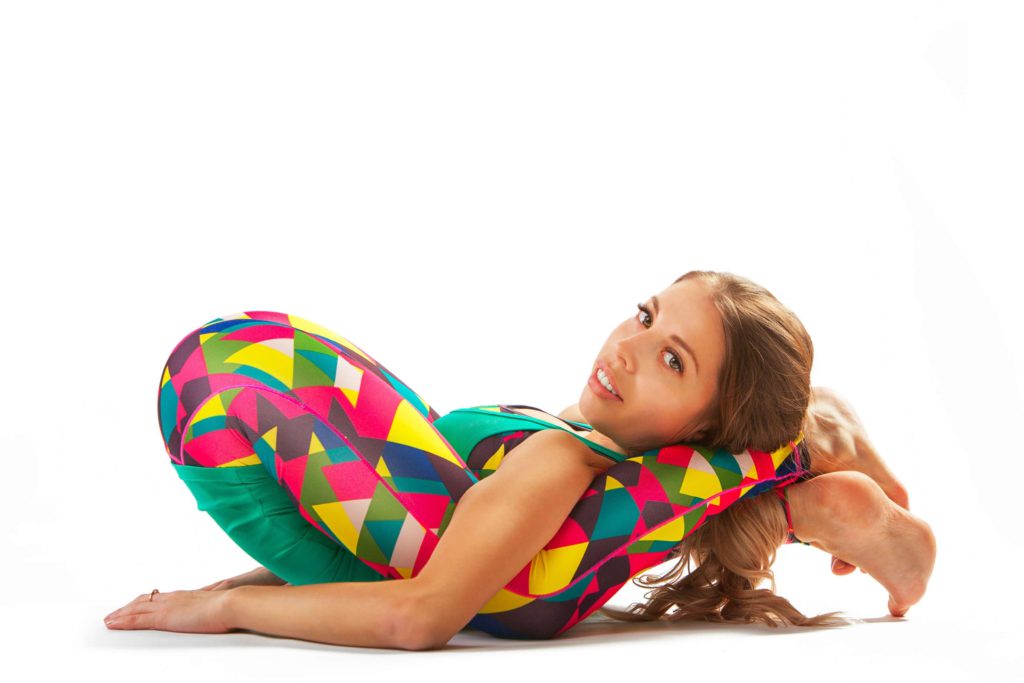
Uttana Kurmasana is the first hatha yoga asana that isn’t a seated posture, however, has calming effects on the body & mind. It’s the lying down variation of Kukkutasana which is performed by first coming into the Padmasana.
To do Uttana Kurmasana, firstly sit in Padmasana and slowly slide your hands between your legs towards an upward direction. Touch your ears with your hands. Lie down on your back with this position.
Uttana Kurmasana is a very calming asana for people suffering from nervous disorder and who get angry easily as it regulates the adrenal glands.
7. Dhanurasana (Bow Pose)
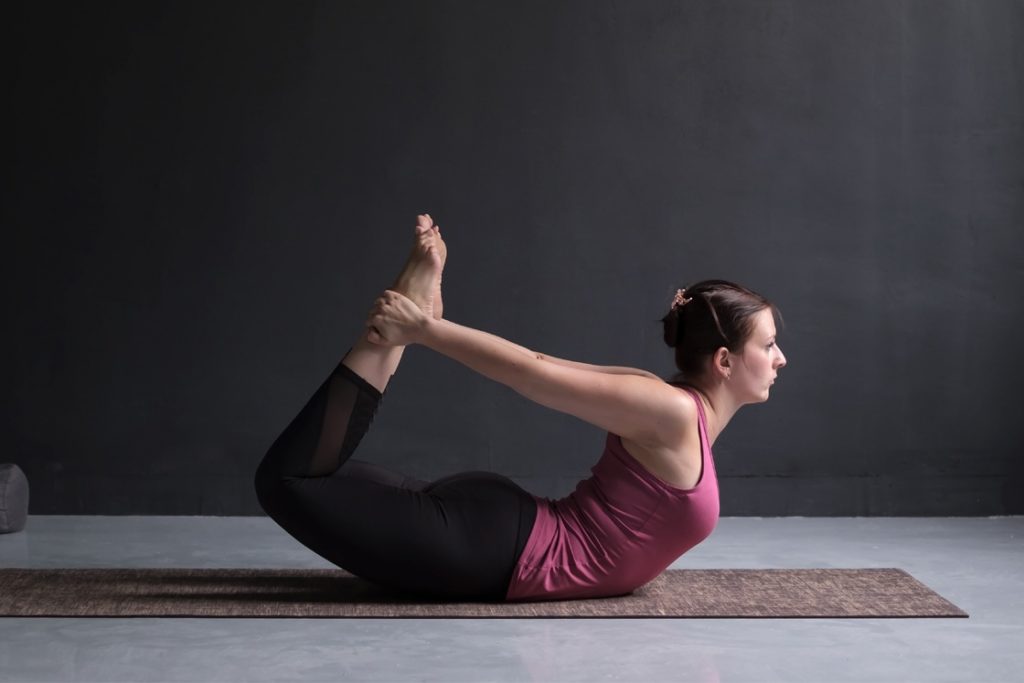
In Dhanurasana, the concept of incorporating Pranayama or breath retention into hatha yoga asana can be easily seen. In the final position of this pose, the breath can be retained to increase the lung capacity.
Dhanurasana or bow pose is the backbend hatha yoga pose. In this particular posture, our body is transformed into the shape of a bow. Generally, this asana is done holding the ankles but the Hatha Yoga Pradipika version says that the toes should be held and brought to the ears as if a warrior is aiming his bow towards his enemy.
To do come into Dhanurasana, lie on your belly Keeping both hands along the side of your torso. Then exhale and bend your knees. Bring your toes close to the hips. Then hold your toes with your hands keeping your knees at the hip-width.
Lift your heels and thighs from the ground by inhaling. Keep your head off the floor at the same time. In the process, you need to gaze forward. Do not stop breathing while doing this asana. Exhale when you come down.
Dhanurasana strengthens your back muscles. Stretches the front of the body and strengthens the neck and your abdomen.
8. Matsyendrasana (Spinal Twist Pose)
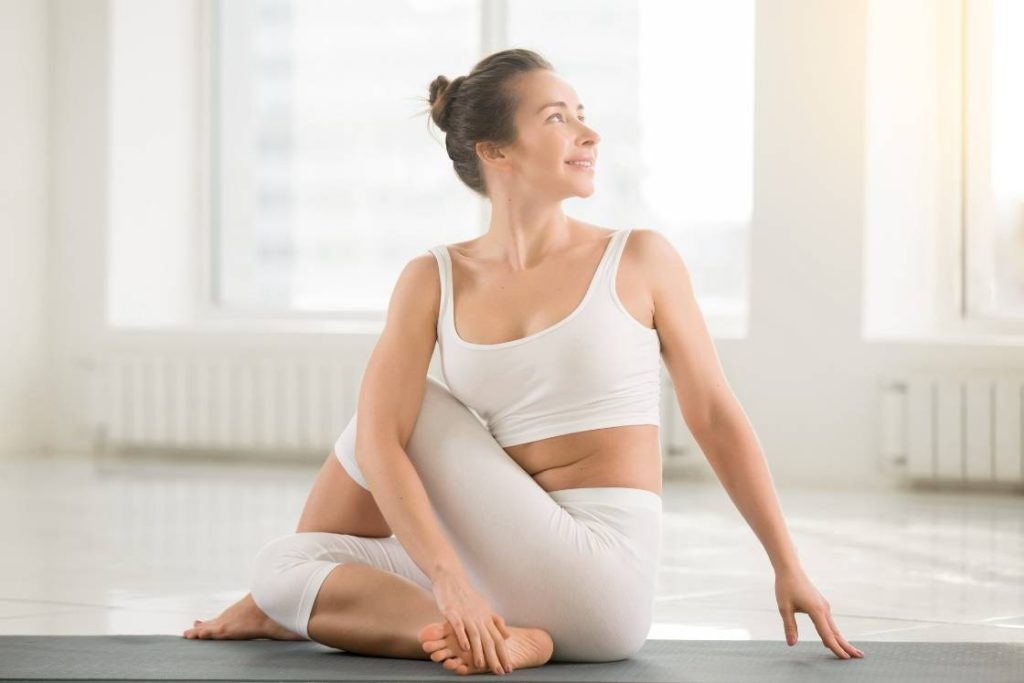
Matsyendranath is an early founder of Hatha yoga teachings on which this asana is named. According to legends, Matsyendranath was the fish, hence this pose is also called the ‘lord of fishes’ pose. Anatomically, in this pose spine get a half twist, so another of it is ‘half spinal twist’.
The pose ‘Matsyendrasana’ mentioned in hatha yoga pradipika is actually the variation of Ardha Matsyendrasana.
To come into this asana, sit properly with your legs stretched out keeping your spine completely erect and feet placed together. Bend the left leg in such a way that the left foot lies exactly next to the right hip. Then take the right leg over the left knee place it next to the left knee. Twist your waist, neck, and shoulders towards the right while gazing at your right shoulder. Continue to be in this pose for 30-6- seconds.
As Matsyendrasana involves the spine, it helps build the flexibility of the spinal cord. It relieves the stiffness of muscles and cures back pain. Matsyendrasana is very beneficial for slip-disc disorder. It also releases stress and tension and increases oxygen supply.
9. Paschimottanasana (Back Stretching Pose)

Paschimottanasana is one stretching pose of hatha yoga that gives a complete stretch from the top of the head to the bottom heel. It’s practiced in a sitting posture where you have to place your forehead on your knees by bending the trunk forward from the hip.
The procedure of coming into hatha yoga Paschimottanasana is very simple.
Sit with stretched legs in front of your body, keep your hands on your knees. Then raise your hands above the head and keep your back straight. Then exhale when you bend forward from your hips. keep the head between the shoulders stretching your spinal column. Hold the big toes with your hands, bringing your head down to rest on the knees.
Paschimottanasana helps in stretching your spine and shoulders. It stimulates the functions of the liver, kidneys, ovaries, and uterus. This asana aids in a better digestive system and cures headaches and relieves anxiety.
10. Mayurasana (Peacock Pose)
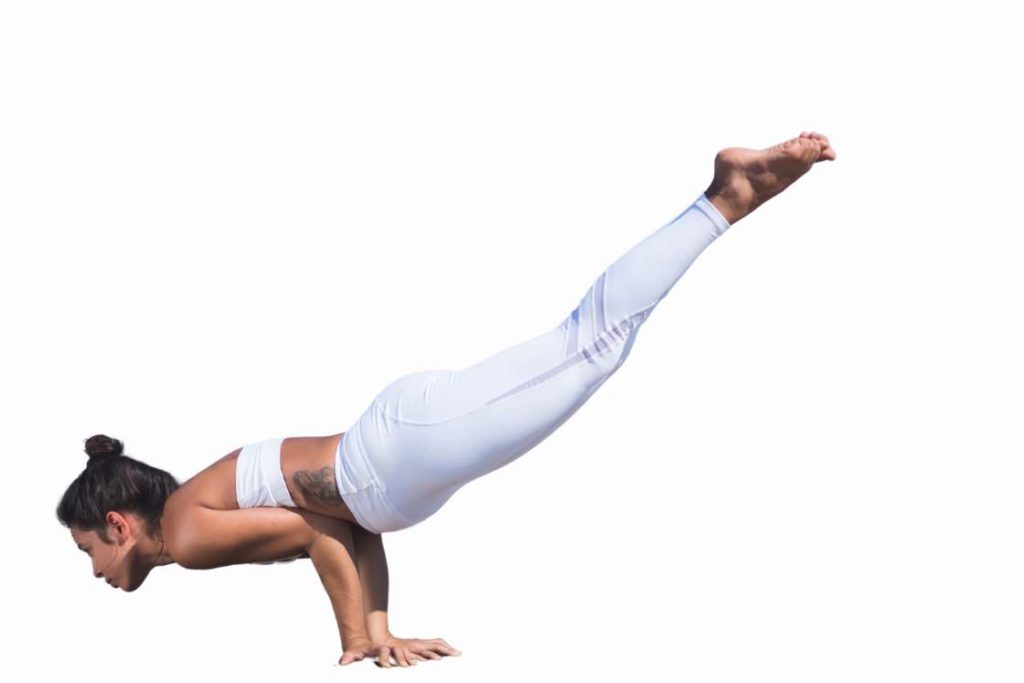
Mayurasana is another balancing posture of hatha yoga that demands strong core muscles and a good grip of forearms on the ground. In this asana, you have to balance your whole body with your palms, while staying in a downward lying position.
It’s said in Hatha Yoga, Mayurasana regular practice rectifies the imbalance of Vata, Pitta, and Kapha. Also, it kindles the gastric fire to enable the better digestion process.
Mayurasana traditionally is performed by;
- First coming into a sitting position on your heels by keeping your knees at a little distance.
- Place your hands on the ground close to your abdomen and rest your hands with the support of your palms. Keep your fingers towards your body.
- Drop your head on the floor keeping your stomach strong.
- Gradually bend your elbows and stretch your legs backward; while doing this keep your feet downwards.
- Push your shoulders towards the back. Keep your head forward.
- Gradually shift your body weight on your hands and lift your legs from the ground with the support of your toes.
- Keep your body parallel to the ground and be in this pose for 10 secs. Then slowly come back to the normal pose.
Mayurasana reduces the impact of diabetes by reducing the level of glucose in the blood. It strengthens the digestive organs and helps in increasing blood circulation to the abdomen. Also, it calms down the stress and improves concentration. It also helps in strengthening internal organs like the liver, pancreas, stomach, intestines, and kidneys.
11. Shavasana (Corpse Pose)
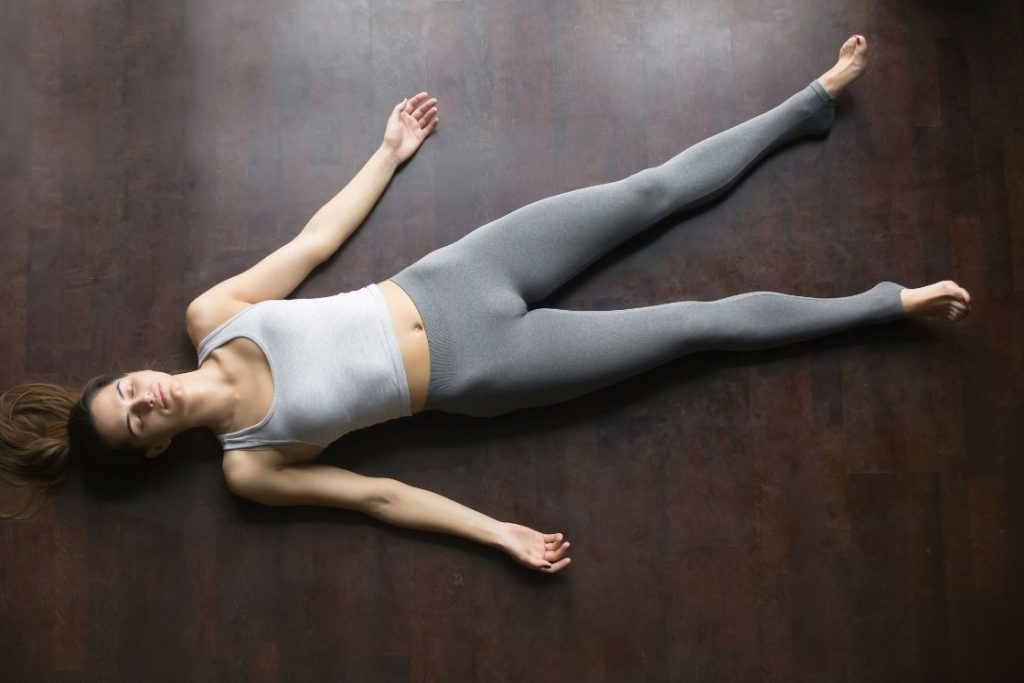
Shavasana is a deep relaxing posture of Hatha yoga which removes the tiredness of the whole body and the mind.
‘Shav’ literally means ‘Corps”; hence Savasana is known as the corpse pose. As it’s a relaxation pose; it is often practiced at the end of vigorous asana class or in between other asanas to relax the muscles.
It’s depicted in hatha yoga – lying flat on the back, legs separated outwards, and arms opened at an angle of 45 degrees. However, the breathing process gets automatically slows down a little in this asana when you keep focusing on body and breath only.
Unlike other hatha yoga asanas which are performed with some conscious efforts, Shavasana is the easiest of all. It helps in building body and mental awareness -hence a good technique to practice Pratyahara.
12. Siddhasana (Accomplished Pose)
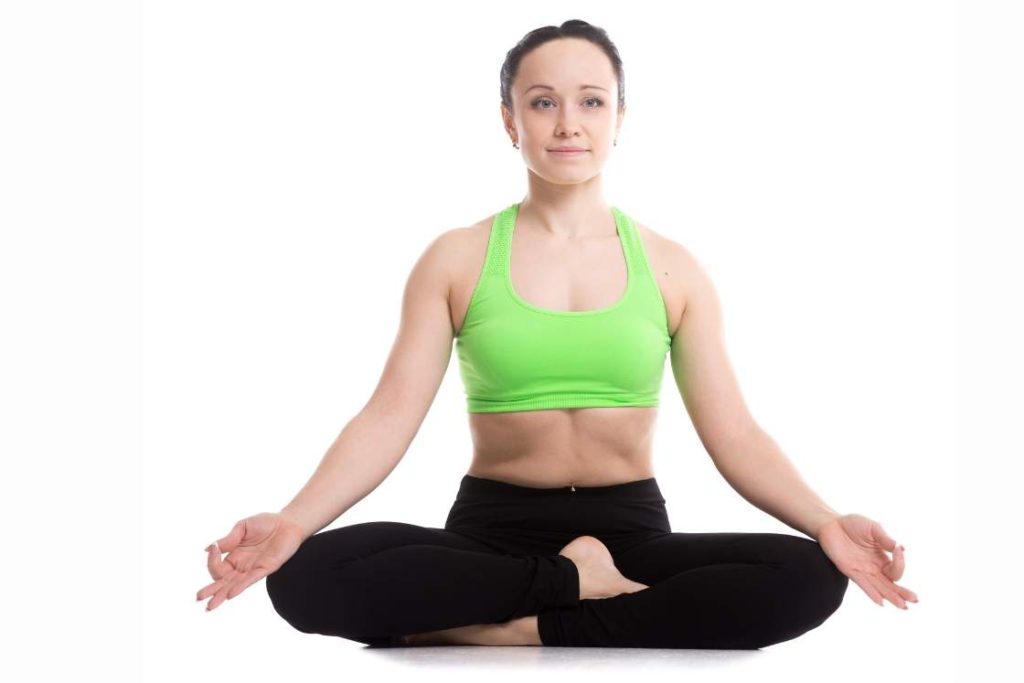
Siddhasana is considered the best pose for meditation according to Hatha Yoga Pradipika. However, it’s emphasized Siddhasana should be practiced by men only, Siddha yoni asana is an equivalent variation for women.
By the practice of Siddhasana Ajna Chakra gets stimulated which gives the practitioner immense power. It’s also called the ‘Accomplished pose‘ or ‘pose of perfection’ for the same reason.
In Siddhasana practice, the one-foot heel is pressed against the genital area and another foot is simply placed in between the opposite thigh and lower leg. Then hands are bought into the Gyan Mudra for meditative purposes.
Siddhasana improves body posture. It stretches the hips, knees, and ankles and balances the functioning of reproductive organs. The spine remains straight with regular practice of this asana. This Asana helps improve the level of concentration.
13. Padmasana (Lotus Pose)

After Siddhasana, Padmasana is another important meditative pose commonly practiced by yogis. However, comparing to Padmasana, Siddhasana is easier for beginner yogis because in this pose feet are less likely to fall asleep.
The feet upward position in Padmasana looks like Padma (lotus flower), so it’s called lotus pose. It’s performed sitting straight on the ground by stretching legs towards the front. Bend the right knee and keep it on the left thigh, putting the heel close to the abdomen. The same procedure should be followed with another leg.
Keep both the legs in a crossed position and put your hands on the respective knees in mudra position. Continue having gentle long breaths staying in this position.
While practicing Padmasana you can incorporate different mudras like Chin Mudra, Chinmayi Mudra, Adi Mudra, or Brahma Mudra. These mudras increase the blood and energy flow in your body. Padmasana controls blood pressure, relaxes our mind, and lessens muscular tension. Regular practice of this Asana also helps improve digestion.
14. Simhasana (Lion Pose)
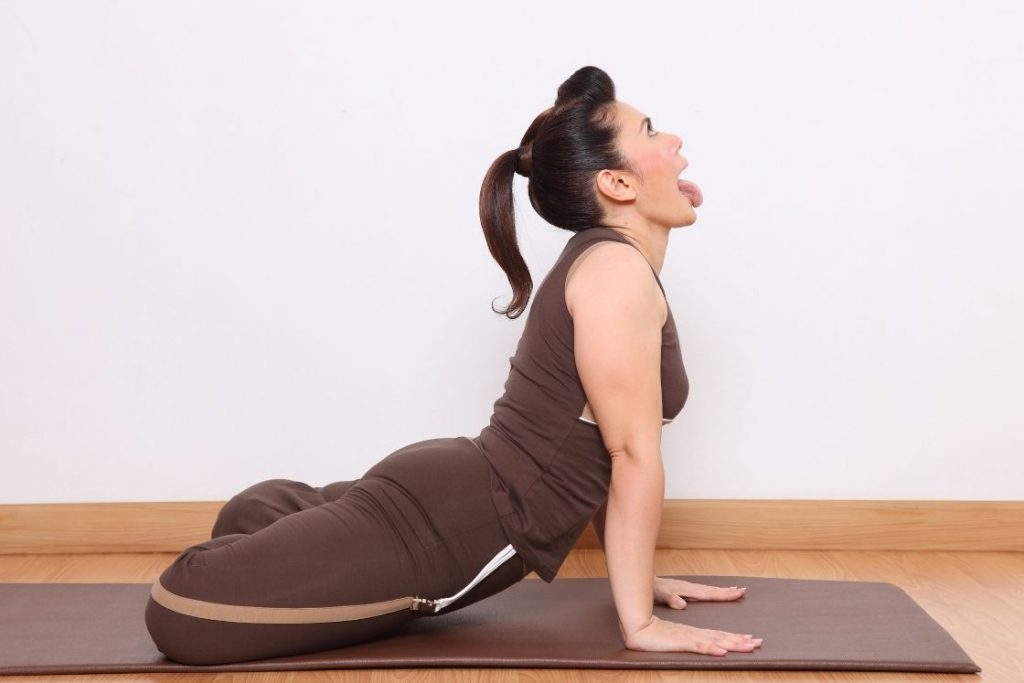
This Asana is derived from two words, Simha (the lion) and Asana (pose); hence it is known as Lion’s pose. The body and the facial posture resembles a roaring lion. According to Hatha Yoga Pradipika, Simhasana can only be performed on an empty stomach when you wake up early in the morning.
To do this asana, Kneel down on the ground. Then cross your ankles such that the front of the right ankle is placed over the back of your left ankle. Press down your perineum on top of the heels.
Put your palms on the respective knees. Firm your fingers on the knees spreading them out. Open your mouth and stretch your tongue out while inhaling through your nose. Wide-open your eyes and contract the throat muscles.
You should exhale through your mouth with a ‘ha’ sound. Roar a few times and change the ankle position after finishing the roaring in the above ankle position.
15. Bhadrasana (Gracious Pose)
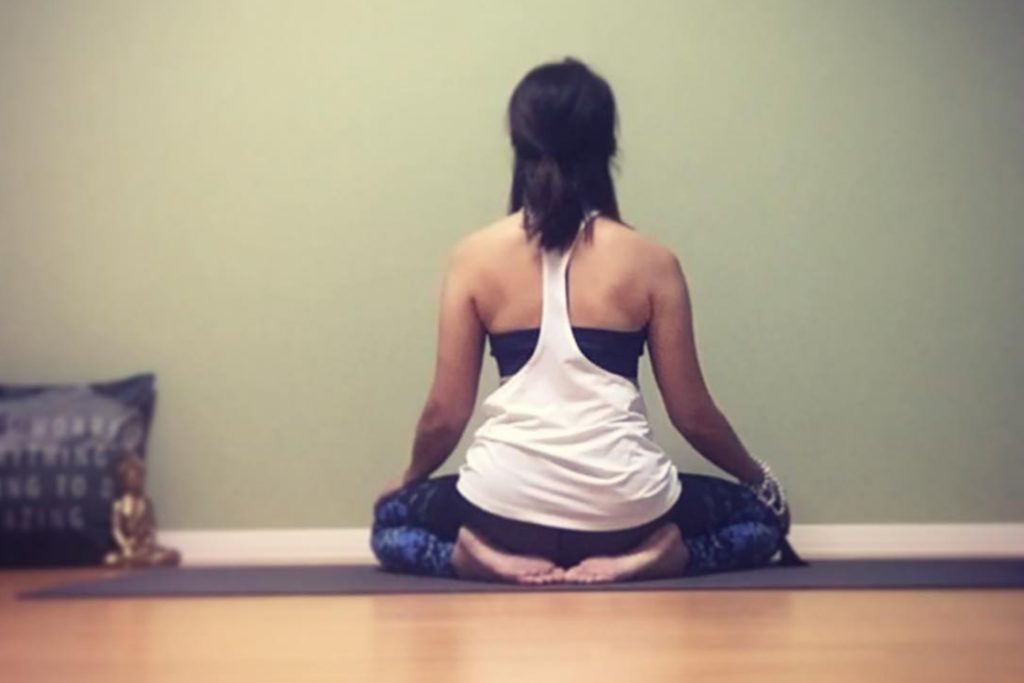
Bhadrasana is the last pose in the series of 15 hatha yoga asanas by Hatha Pradipika. It’s another meditative sitting posture in which the heel is placed against the perineum at the bottom.
Bhadra literally means ‘gracious’ and ‘blessed’. According to Swatmarama, it is also named as gorakshasana. Some also call it moola bandhasana.
To do Bhadrasana, sit in vajrasana and place the knees as wide as possible. Then place the heels underneath the sides of the genitals. Keep your heels together, and the balls of the feet are under the hips.
Then hold the toes from behind the back making your body steady. Close your eyes and concentrate on the breath, a given symbol or mantra.
Bhadrasana improves digestion and strengthens thighs, hips and backbone. It enhances brain power and aids in better focus and concentration. This Asana can also cure fatigue.
Final Words
Hatha yoga asanas are the complete set of physical postures which when practiced mindfully, also open mental knots. The importance of asanas isn’t measured by how beautiful or difficult it looks like, but how consciously one can be with a pose.
The ultimate aim of practicing different postures is to hone some consciousness from each pose. And this is how yogis expand their consciousness by practicing yoga asana.
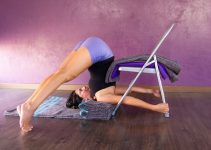

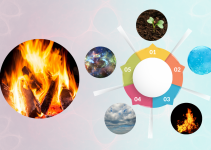


Amalia MARCH 30, 2023
The Dhanurasana pose described in the HYP is different from the modern pose, it’s a seated pose, similar to Dandasana, where you grab your big toe and bring it towards your ear..
REPLY:Akarna Dhanurasana – The Shooting Bow pose is altogether different from the Dhanurasana pose
True, these are modern variations, not the ones mentioned in Hatha yoga Pradapika. At least they should have bothered to mention it than provide tainted info
The Dhanurasana pose described in the HYP is different from the modern pose, it’s a seated pose, similar to Dandasana, where you grab your big toe and bring it towards your ear.
Pls send me details of yoga asana, pranayama, Shauna, & mudra vijnana notes
It’s unfortunate that the pictures don’t accurately depict the asana.